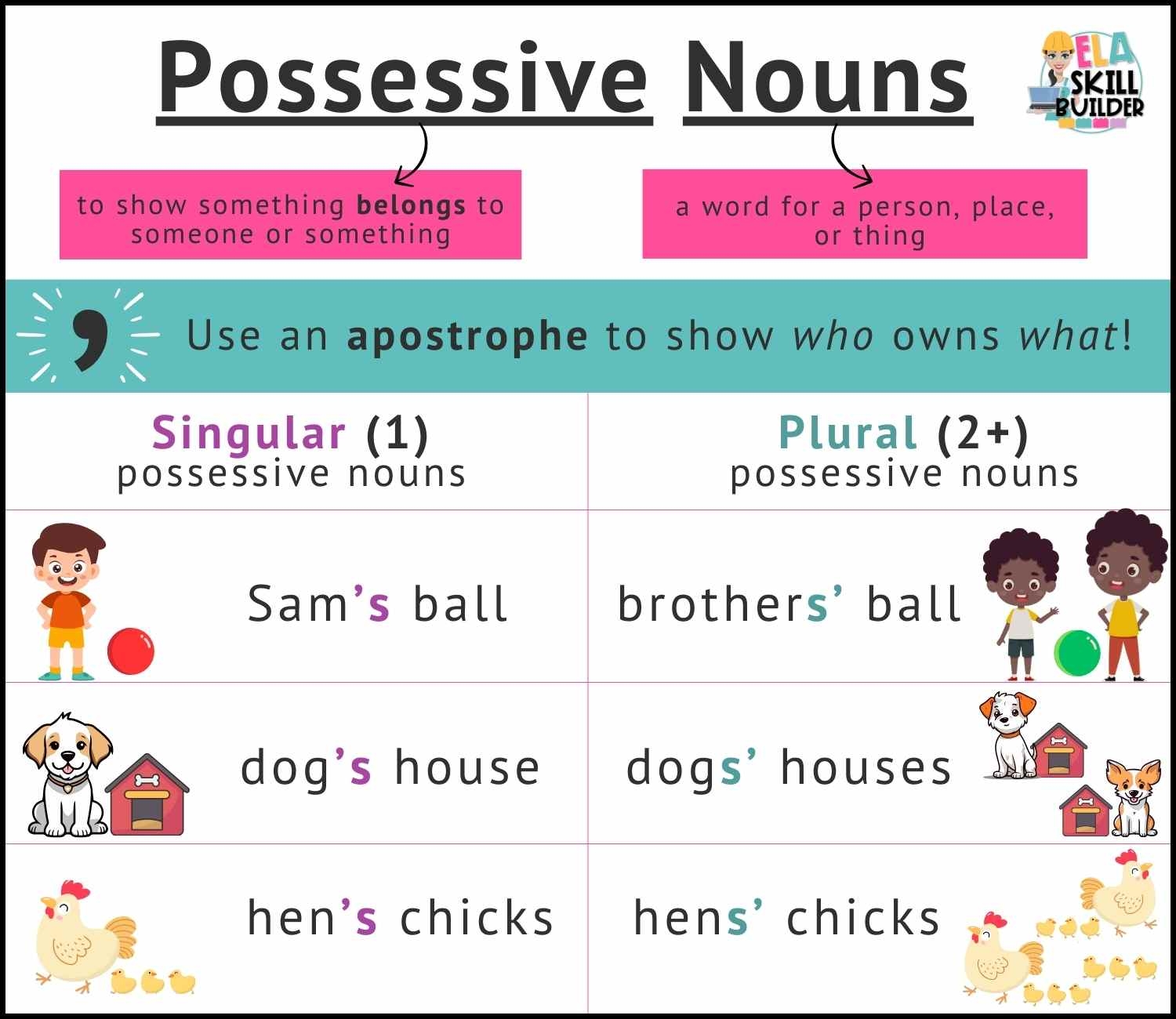When it comes to writing in English, mastering the rules for possessive nouns is essential for clear and effective communication. Possessive nouns show ownership or possession of something, and understanding how to properly form and use them can greatly improve your writing skills. In this article, we will explore the rules for possessive nouns and provide examples to help you understand how to use them correctly.
Whether you are writing a simple sentence or a complex paragraph, knowing how to correctly use possessive nouns can make a big difference in the clarity and professionalism of your writing. By following the rules outlined below, you can ensure that your possessive nouns are always used correctly and effectively.
Rules for Possessive Nouns
1. To show possession for singular nouns, add an apostrophe and an “s” at the end of the word. For example, “the dog’s bone” indicates that the bone belongs to the dog.
2. To show possession for plural nouns that do not end in “s,” add an apostrophe and an “s” at the end of the word. For example, “the children’s toys” indicates that the toys belong to the children.
3. To show possession for plural nouns that end in “s,” simply add an apostrophe after the “s.” For example, “the girls’ dresses” indicates that the dresses belong to the girls.
4. When showing possession for joint ownership, add an apostrophe and an “s” to the last noun only. For example, “Sarah and Tom’s house” indicates that the house belongs to both Sarah and Tom.
5. Avoid using an apostrophe to show possession for pronouns, as they already have possessive forms. For example, use “its” instead of “it’s” to show possession.
By following these rules for possessive nouns, you can ensure that your writing is clear, concise, and grammatically correct. Practice using possessive nouns in your writing to become more comfortable with applying these rules in various contexts.
In conclusion, mastering the rules for possessive nouns is an important skill for any writer looking to improve their English language proficiency. By understanding and applying these rules, you can enhance the clarity and professionalism of your writing, making your work more engaging and effective for your readers.
